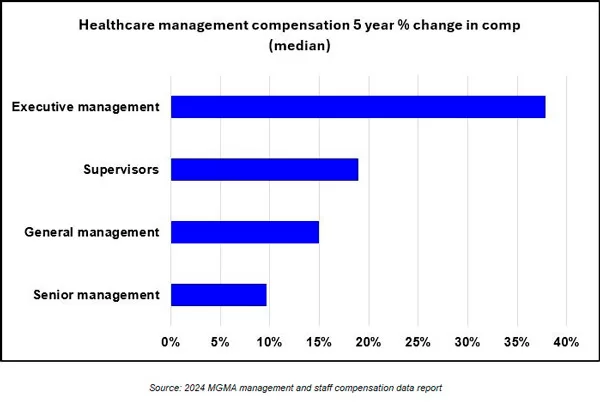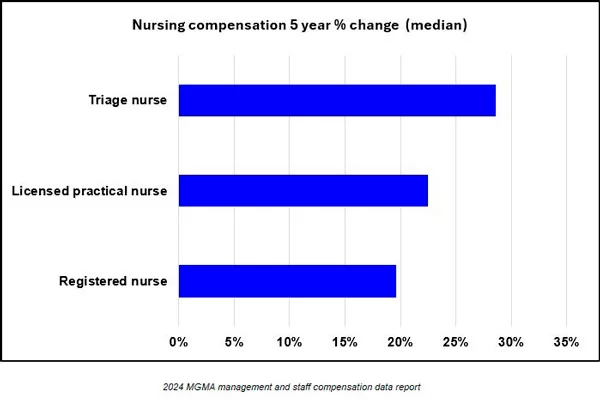“Sizable compensation increases for these roles are in line with anecdotal reports about the continuously competitive labor market,” according to a new report by MGMA
by Intelliworx
The shortage of providers is perhaps the biggest challenge facing rural healthcare facilities. Accordingly, there’s a lot of focus on incentives to attract more providers, particularly compensation.
Providers are an important part of the puzzle. However, it’s important to remember they usually have a team to support them. These team members handle a wide range of supporting tasks from negotiating with payers – to prepping patients to be seen by a provider. They are crucial to keeping things running smoothly.
To that end, the Medical Group Management Association (MGMA) is out with a new report that benchmarks the growth in management and staff compensation. While the report benchmarks the changes over several different time periods, we believe the 5-year time frame is the most useful benchmark.
Never miss a post! Subscribe to our weekly newsletter by email.
Healthcare management compensation
Executive leaders in healthcare saw the biggest median increase over a five-year period with a 38% change. That’s 10 points higher than the next largest increase – triage nurses with 29%.
Here’s how the overall five-year change in compensation added up:
- Executive management – 37.89%
- Supervisors – 18.93%
- General management – 14.96%
- Senior management – 9.68%

Healthcare non-managerial compensation
“Non-managerial roles in medical group practices continued to show robust year-over-year compensation gains,” according to the report. These roles include technicians such as laboratory or radiology staff.
The tally for non-managerial compensation growth is as follows:
- Managed care admin staff – 26.88%
- Patient accounting staff – 21.42%
- Radiology and imaging – staff 17.89%
- Medical receptionist – 17.23%
- General admin staff – 17.18%
- Clinical laboratory staff – 13.07%

Nursing compensation
Nurses are the backbone of the healthcare system. They spend more time with the patient and so naturally see (and report) behavioral changes that a provider might miss.
Unfortunately, nurses too are facing burnout, yet oddly, registered nurses saw the lowest five-year change in compensation. While it’s not depicted here, the report notes that the one-year change “decreased by 3.32% in 2023.” This will only add to the challenges of recruiting and retaining nurses.
Data for the nursing category stacked up this way:
- Triage nurse – 28.58%
- Licensed practical nurse – 22.45%
- Registered nurse – 19.58%

Medical assistant healthcare compensation
Like nurses, medical assistants also experience slower growth – particularly in the last couple of years. According to the report:
“Median total compensation for MAs, one of the most highly in-demand roles in recent years, posted only a 3.13% increase in 2023 – a significant cooldown from the 7.09% increase seen in 2022.”
In total, the numbers looked like this:
- Medical assistant – 20.59%
- Certified nursing assistant – 17.62%

* * *
While there are some subtleties, overall, the report sums up the compensation gains aptly:
“Sizable compensation increases for these roles are in line with anecdotal reports about the continuously competitive labor market.”
The full report is chock full of other useful data points and can be downloaded from here: 2024 MGMA management and staff compensation data report.
If you enjoyed this post, you might also like:
Survey: 45% of healthcare providers will refuse a job offer if the recruiting experience is poor
Image credit: Pexels and respective study



